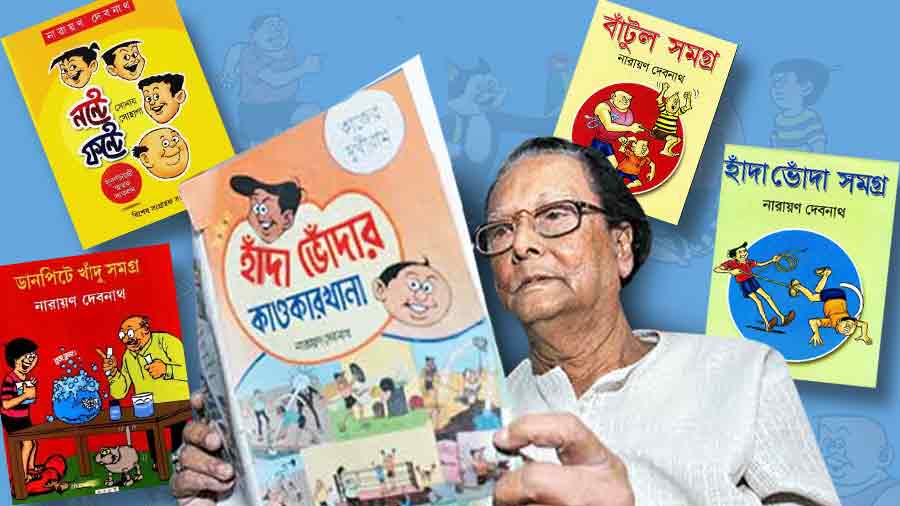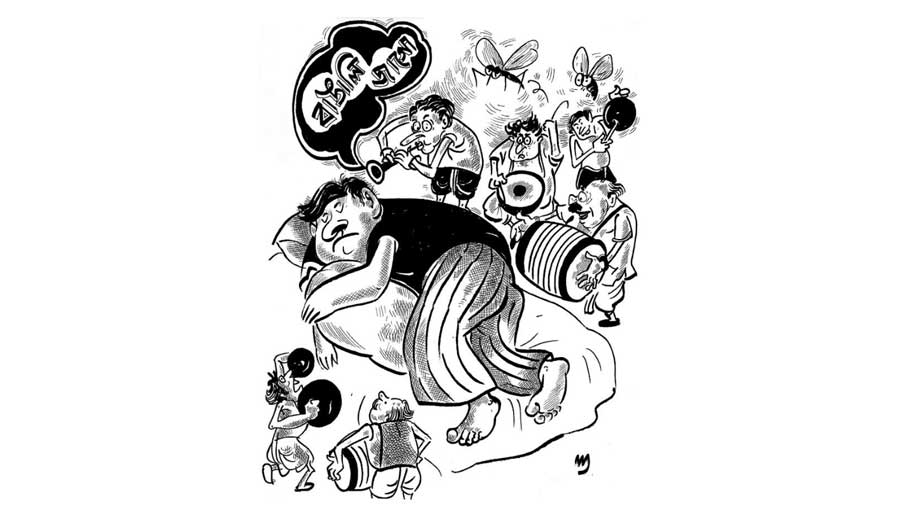One distinctive kind of visual storytelling that has won the hearts of generations of readers is comics. It’s an incredible popular art form that often sends out a message through humour.
Comics in Bengal, a month-long exhibition being held at the Kolkata Centre for Creativity in collaboration with Comics Culture Collective, celebrates the creative genius of Bengali comics and traces its journey while delving deeper. The exhibition is on till March 9.
The beginning
Scholars often perceive patachitra and terracotta panels as forerunners of comics. But it is Sukholota Rao's' Jemon Kormo Temni Fol (Sow as you Reap), first published in Sandesh in 1921, that is considered to be one of the first acknowledged comics in Bengali, complete with speech bubbles and other features typical of the format. The exhibition focuses primarily on comics in print. Generally published in periodicals such as Sandesh, Mouchak, Sachitro Bharat, Nabakallol, Shuktara and Anandamela serially or in annual editions of the magazines, these comics were mostly targeted at children or young adults.
Comics in Bengal pays tribute to fascinating comic creators of the likes of Mayukh Chowdhury, Narayan Debnath, Saila Chakraborty, Tushar Chatterjee and others. Their creations not only made a mark on the minds of readers, but also formed a fandom that slowly became a community. This community had a significant impact that spawned an unprecedented amount of comic strips on public demand in successive decades.

Early comics published in Mukul around 1887 published as a sequential narrative of events
The exhibition
The comics showcased in the exhibition have been arranged in 11 categories like ’Gags, Giggle, Guffaw and Glee’, which exhibits early specimens of Bengali comics — series of pictures published in the late 19th century in children’s magazines like Mukul, Mouchak or Sandesh. These were mainly humorous pieces. In the early 20th century, speech bubbles started to make an appearance. Amidst the swirl of political and social crises faced by the country and Bengal, in particular, funny comics continued to be the most popular genre over the following decades.
’Fictionalising History, Historicising Fiction’ includes action-packed episodes set in pseudo-historical situations masquerading as history. Sometimes only the historical characters are picked up and placed in an imaginary scenario, while the opposite also happens — imaginary characters set in historical times.
‘Adept at Adaptation’ showcases graphic adaptations of literary works — a time-tested method adopted by comics artists. Given the rich heritage of Bengali literature, it comes as no surprise that a large number of classics have made their way to the drawing board. From Sharadindu Bandopadhyay to Satyajit Ray, Rajsekhar Basu to Sibram Chakraborty, the list is endless.
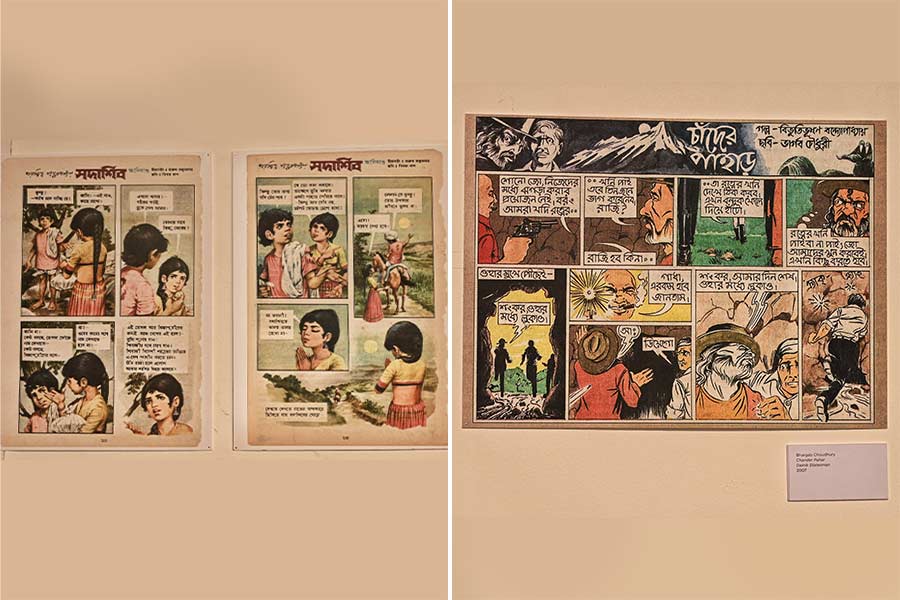
Sadashib comics illustrated by Bimal Das and scripted by filmmaker Tarun Majumdar based on the original story by Sharadindu Bandopadhyay. The comics was published in Anandamela in 1980 and (right) Bibhutibhusan Bandyopadhyay's Chander Pahar illustrated by Bhargab Choudhury and published in Dainik Statesman
As early as 1958, when Phantom appeared as Aranyadeb in Anandabazar Patrika, he became one of our own. This naturalisation of foreign characters through translation continued, be it Tintin, Tarzan, Henry or Asterix. Slowly these names entered Bengali households and became a part of their culture, as seen in ‘Babel to Bengali: Found in Translation’.
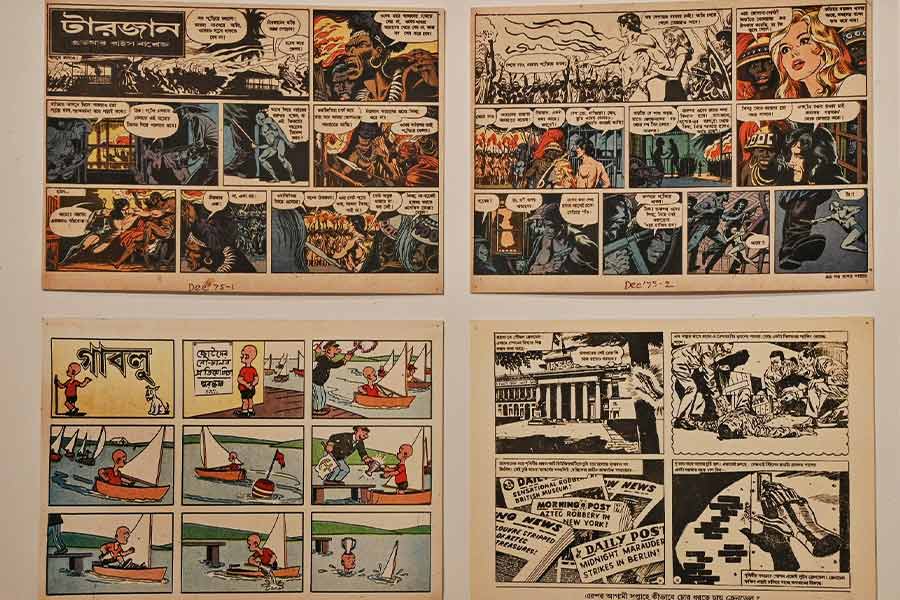
Tarzan aka Aranyadeb and Henry aka Gablu have been strong favourites
‘Faith and Flights of Fancy’ — mythological tales intertwined with folktales and myths of social life — proved to be a fertile ground of imagination for comics artists in Bengal. Chhobite Ramayan and Chhobite Mahabharat created by Purna Chandra Chakraborty gained immense popularity.
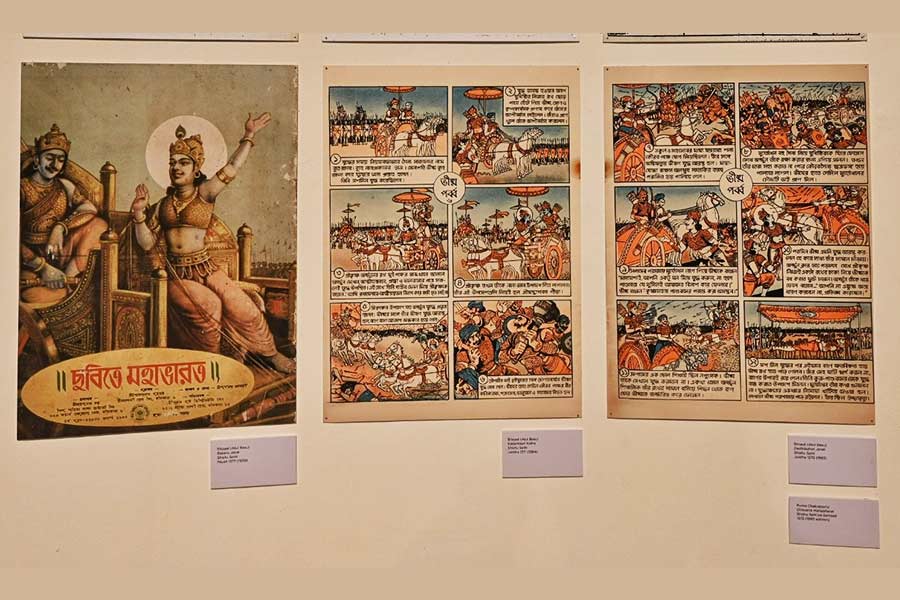
Even mythological stories such as Ramayan have been illustrated into comics
Pictures and words
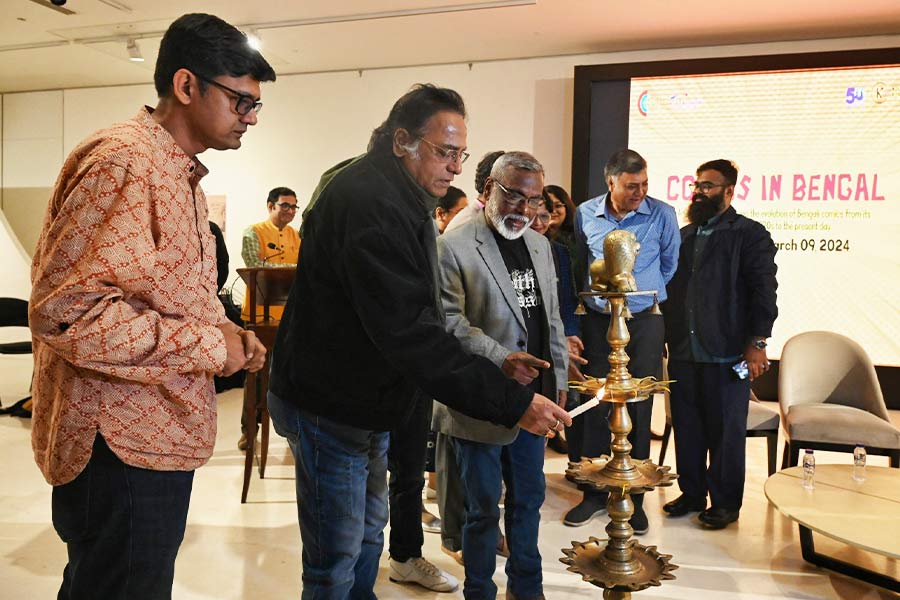
'An exhibition based on Bengali comics is the first in Kolkata'
Talks, conversations, workshops and panel discussions on comics have also been organised. Speaking about the exhibition, artist Debasish Deb said: “An exhibition based on Bengali comics is the first in Kolkata. It's like a celebration of comics. Many people are unaware about the strength and heritage of Bengali comics. This exhibition is the first step. What should follow is an anthology.”
Cartoonist Sarbajit Sen said the exhibition was an archive of sorts. “This is an exciting collection and a very positive step. Creating such an exhibition is a humongous task. Kolkata has never witnessed such a thing before. Hats off to the whole team for such fabulous work,” he said.’
Painter Subrata Gangopadhyay, who illustrated comics around 1974 and continued doing so for another four or five years, said: “We get to see different kinds of exhibitions but one on comics is one of its kind. This is really fascinating. The team had to put in a lot of hard work and dedication for such a grand display. This is like a big archive that will help the coming generations too.”
It all began with a call from Swagata Dutta Burman, comics collector and researcher, to Pinaki De, member of Comics Culture Collective, graphic designer-illustrator and comics scholar.
“We got in touch with Biswanath Gangopadhyay who is a repository of knowledge on comics, Debasish Gupta who has five thousand books and periodicals on comics and we also connected with Rituparno Basu who is a cartoonist and researcher. We started Comics Culture Collective. There is no official repository of comics in Kolkata except Professor Abhijit Gupta of Jadavpur University only has one. We started searching for a personal repository and then got connected to Indranath Bandopadhyay who opened it for us. Our next concern was how to archive it. The whole team started working rigorously. We double checked, even triple checked the dates, publications and other details. We are also planning to bring up a book on this since we need to check the facts another time since it's going to be a definite anthology of Bengali comics. It took us one and a half years to organise. In this exhibition we have displayed how some periodicals and newspapers have shaped the entire trajectory of Bengali comics.”
Timings: Monday to Saturday, 10am to 6pm

